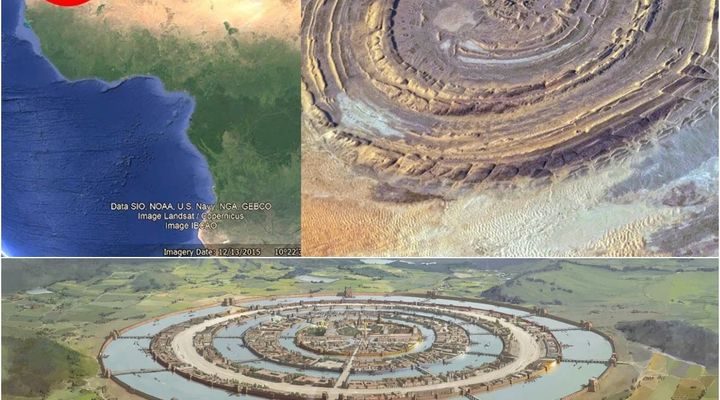
The famed lost city of Atlantis may have been found in a rather unlikely place – the Sahara Desert.
According to a YouTube clip uploaded earlier this week that’s found a massive audience online, the remains of the ringed city Plato spoke of in the fourth century BC can be found in the African country of Mauritania.
And it’s been hiding in plain sight this whole time.
“We’ve been looking in all the wrong places for its location since everyone assumes it must be under the ocean somewhere, such as in the depths of the Atlantic Ocean or the Mediterranean Sea,” says the host of Bright Insight YouTube channel, known only as Jimmy.
Instead he proposes a strange formation known as the Richat strucuture, or the ‘Eye of the Sahara’, is the mythical city’s true location.
He says it is not only the exact size and shape Plato said it was – 23.5km across and circular – but mountains he described to the north can be seen quite clearly on satellite imagery, as can evidence of ancient rivers, which Plato said flowed around the city.

Scientists are yet to figure out exactly what created the Richat structure, saying while it looks like a crater, there’s no evidence of any impact.
Plato said Atlantis was destroyed in a “single day and night of misfortune” and sank beneath the waves. The scientific record does show the Earth underwent significant climate upheaval around 11500 years ago, when Atlantis is alleged to have disappeared. Jimmy also points out satellite imagery that resembles the aftermath of a tsunami unlike anyone alive today would have seen.
“Doesn’t the entire region look like it was blasted by flowing water or a tsunami?”
As the video goes on, Jimmy manages to weave in Greek mythology, birth rates, plate tectonics and more, crafting a convincing argument that not only is Atlantis real, but above land and still visible today.
Most experts believe the tale of Atlantis was merely that – a tale. In recent decades, a number of places have been singled out as potential sites – including Crete, the Atlantic and even Antarctica.
A full-length documentary backing the Richat theory was released in 2011, but has only a tiny fraction of the views on YouTube that Bright Insight’s 20-minute clip has racked up in a matter of days.



